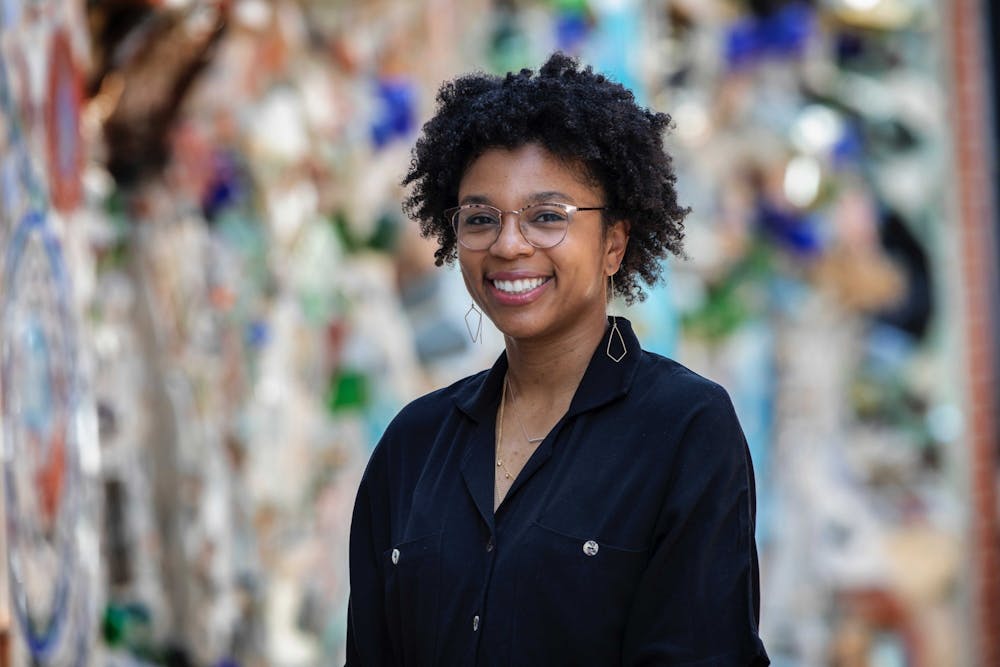After a year of online learning, everyone is simply exhausted. It’s difficult to imagine school without Zoom fatigue, Wi–Fi crashes, and awkward breakout rooms. Yet, if there's one group of people dedicated to turning remote learning into something salvageable, it's teachers.
Take Charmaine Giles. After starting as a sixth grade teacher, she's transitioned into a leader at Mastery Schools.
Although teaching has its normal challenges—like talking with parents and ensuring that students can focus on their education without other worries—the pandemic has triggered an onslaught of uncharted responsibilities.
Some days, Giles spends hours contact tracing and communicating with parents in English and Spanish to help them access online health information.
“I'm learning Spanish, but I'm not fluent. With something as simple as the lab's website only coming in English, I'm helping in my best Spanglish to translate for them and make them feel comfortable," she says.
Giles is constantly adjusting to the ever–changing nature of teaching amid a pandemic, which has forced her to think practically about the long term ramifications of every decision. “I thought, ‘Can we do this for months? Is this sustainable? As the science changes, does this still make sense?’” she says.
Unfortunately, extensive planning doesn't always pan out well due to the unpredictability of COVID–19, so she and her staff must solve problems at a moment's notice. The Friday before students were scheduled to return to school after summer break, Giles was told that they needed to switch to an entirely virtual model. After a summer of preparation, the charter school had to change weeks of lesson plans in one weekend.
The nature of the pandemic has naturally transformed the educational system with the potential of technology and online learning. However, Giles also believes that attending school virtually isn't ideal.
“It's not the quality education that I can give when we're in person, and I won't pretend like it is,” she says. “It's a very convenient Band–Aid that I think went well for eight out of ten kids, and they'll be able to succeed. But so many of our kids learn from each other, and technology is a barrier.”
As Giles' sixth–grade classroom exemplifies, the COVID–19 pandemic keeps exposing inequities beyond the schoolhouse, like the lack of access to health care and food insecurity that severely impact many students and their families.
“I have a crazy amount of students that we serve meals every day to [for] breakfast, lunch, and sometimes a snack or dinner because they're here for after care. We're not just talking about COVID–19, but we're talking about food access,” she says. “If one of my students is to get sick, their ability to get quality medical care is way different than if you go three miles that way to Pennsauken. I had kids missing whole days, waiting in line in the clinic because they had an earache.”
However, Giles prides her student body for their resilience. “I have older siblings that are in fifth grade helping their kindergartener brother or sister because their mom or dad are working,” she says. “Some of them weren't even learning because they were babysitting the whole time, or they're holding their infant brother and sister as they're learning long division."
Although students feel the heavy weight of the pandemic, they're not the only ones. Teachers must also cope with this traumatic time. Some are losing family members and dealing with illness while also reassuring their own students, which leaves them little room for self–care.
Because of these newfound tensions, teacher burnout has only increased. Giles says that one program has been vital among her colleagues in helping to mitigate this fatigue: the Burn–In Mindset.
Burn–In Mindset provides personalized coaching sessions for teachers to learn and apply positive psychology so they can support and uplift one another. Through methods like identifying signature strengths and starting each day with morning huddles and inspirational videos, Burn–In Mindset has become a game changer for Giles and her staff.
“I think [the] Burn–In Mindset is how you truly shift from burning out to burning in in a way that is sustainable. If I want to do this work, I have to take care of myself,” Giles says. “I think that teaching these strategies to your teaching staff is the only way that you can have teachers retain and stay in the work of something as difficult as being a teacher in an underserved community during a pandemic.”
As Giles looks forward to the future as both an educator and a mother to a toddler, she hopes for a more equitable world that is free from the effects of redlining, gerrymandering, and racism for her students and daughter.
In her quest for language, racial, and socioeconomic diversity in education, Giles says, “I'm not running a school that reflects that wish right now, so what I try with my co–leaders is to create that space through activities, books, and experiences that really foster the love of learning about difference, but also the love of learning about ourselves. I just hope that it doesn't just exist in the corner that I live in."







